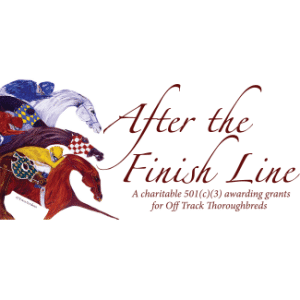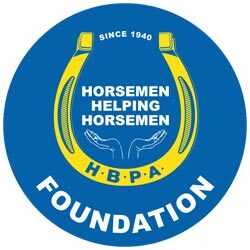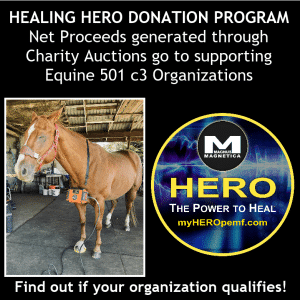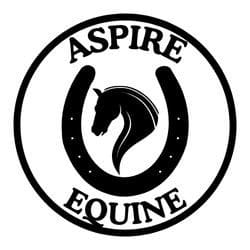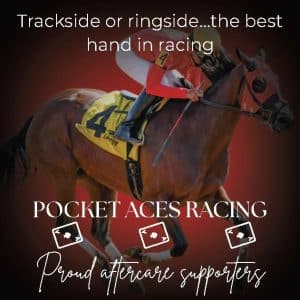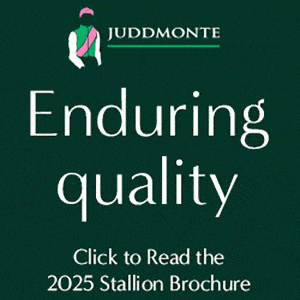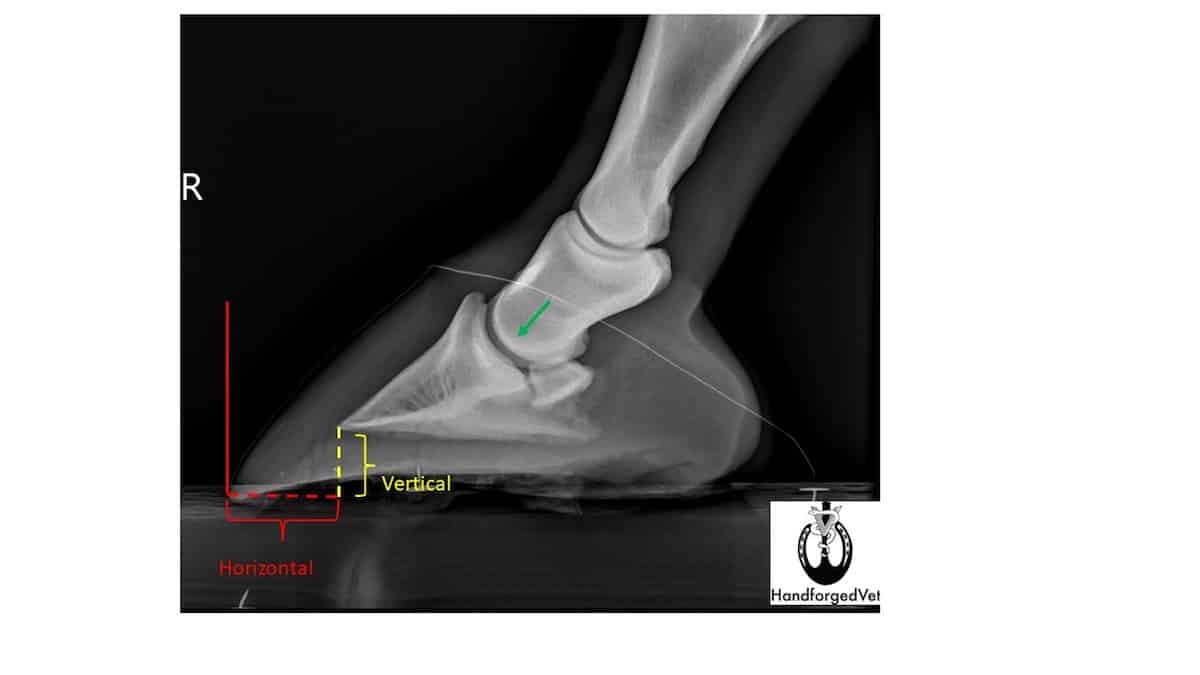
A negative palmar angle (the white dotted line) forms when the back portion of the coffin bone is closer to the ground than the front portion. Courtesy Dr. Adam Pendleton
Off-track Thoroughbreds can do just about anything. They can be talented athletes, reliable pasture companions and even great first horses. But veterinarians, farriers, and OTTB owners and trainers alike recognize that these horses can retire from racing with thin hoof walls and soles, underrun heels and brittle feet. It’s important to formulate a plan with your hoof-care team to manage and correct these issues, promote healthy hoof wall growth going forward and keep your horse sound.
Thin Soles and Walls
Thin soles commonly cause subtle lameness. While farriers and veterinarians see them in all breeds, thin soles are especially common in Thoroughbreds. When these professionals assess horses’ soles, they typically want to see a healthy depth of 18-20 millimeters. A sole less than 15 millimeters deep can result in lameness.
Often, thin-soled hooves lack the normal concavity you see with a healthy average sole. Instead, their soles are flat bar-to-bar. These horses lack the concussion protection of a thicker sole, putting more pressure on the solar laminae (which supply blood to the hoof) and causing pain.
“When I see thin walls and soles in an OTTB, is it usually in an animal which is prone to having a naturally long, horizontal foot,” says Adam Pendleton, DVM, certified journeyman farrier and owner of HandForgedVet, in Marblehead, Ohio, whose practice focuses on sports medicine and podiatry. “A horizontal foot is when there is a long distance from the tip of the coffin bone to the tip of the toe, as opposed to a … foot with vertical depth. Vertical depth is what protects the internal structures of the hoof, and horizontal length is what gives resistance to the ground for propulsion.”
“What I often see is people overtrimming feet that aren’t quite perfect,” he continues. “We have this image in our head of the perfect foot, and we try to make every foot fit into that box.”
When trimmed to fit the ideal mold, one of two things commonly happens: The horse is trimmed to the point that the soles are either too thin or the coffin bone is pinched, restricting blood flow and causing poor future hoof growth.
“The hoof gets its nutrition through the blood flow, and if you impinge that blood flow anywhere, it’s not going to have the same nutrition or the same moisture,” Pendleton says.
Trimming and shoeing goals then focus on adjusting hoof alignment. Shoes can relieve the solar structures from constant pressure and allow them to grow out. Applying a leather pad to the hoof is also a useful strategy when managing thin-soled horses.
“The pad itself will form a clip around the hoof once it sinks in to help hold that hoof wall together,” says Carrie Balasar, of Pavelek Farrier Service, in Kinderhook, New York.
Underrun Heels
Another all-too-common pathology in Thoroughbreds is the long-toe, low-heel hoof. It’s most often accompanied by the dreaded negative palmar angle (NPA). Diagnosed via radiographs, this angle occurs when the back portion of the coffin bone is closer to the ground than the front portion. This puts an immense amount of pressure on the supporting soft tissue structures of the heel, including the deep digital flexor tendon, the collateral ligaments and the navicular apparatus.
“We can support and help best we can,” says Balasar. “You cannot expect a horse to have underrun heels and expect it to be fixed in a year’s time.” The goal is long-term management.
“A lot of times people will go with a wedge pad because they want to get the angles up; they don’t want the suspensory (ligament) strain,” she continues. “I personally do it if the horse will tolerate it for a limited time but not long term. However, wedge pads down the road cause more crushing of the heels, so you have an even more broken, nonfunctioning foot. I prefer to do a frog support pad with dental material below to support the foot and encourage blood flow and, as a result, heel growth.”
As stated, radiographs are the definitive way to diagnose a horse with an NPA. Furthermore, diagnostic images give the farrier incredibly important information on just how much they can trim. “You can’t see in the foot — none of us have X-ray vision,” says Balasar.
Feet That Are Too Wet or Too Dry
“When you’re looking at excess moisture, the biggest thing we think of is pathogenic overgrowth,” says Pendleton. “What happens is you start getting anaerobic (survives without oxygen) bacteria, and that weakens the foot a lot and causes it to become spongy.” While bacterial and fungal infections such as thrush or white line disease don’t always cause a clinical lameness, they can be detrimental to the capsule itself.
“If I have a horse with crumbly feet, I don’t want them out on grass until the dew is dry,” says Balasar. “The hoof is porous and just absorbs everything around it. If they can stand in shavings to their coronary bands to help it dry out, that’s super helpful.”
Balasar recommends applying sealants in wet climates or when horses receive frequent baths. These products work to maintain proper moisture levels in the hoof capsule.
“Spongy, overly hydrated feet can be just as challenging to maintain as brittle feet,” says Pendleton. “Either of these two scenarios can break down the internal structural support to the bony column, continuing the cycle of mechanical displacement of the coffin bone downward in the hoof.
“I think the brittle feet conversation ties in closely with the thin sole topic,” he says. “Feet that get poor perfusion (delivery of blood) from the compression of the sole will simply not be as healthy. When the sole is compressed, perfusion of the solar plexus is decreased, therefore decreasing moisture in the hoof. This is not an ideal situation in hot, dry areas where the horses are outside stomping flies all day.”
Trimming Issues
The racetrack is a unique world, with different management practices, veterinarians, farriers and ways of life than recreational or sport horse environments.
“What I see is track farriers are much more in tune because all they see is Thoroughbred feet. They get used to managing those,” says Pendleton. “What happens when (horses) leave the track is that now you’re in different types of barns and disciplines. What I see a lot of times is somebody is trying to put that short upright Quarter Horse foot on the end of a long Thoroughbred pastern.”
This poses the question: Does poor trimming lead to problems such as thin soles and NPAs?
The trim maintains the scaffolding of a healthy hoof. “The biggest thing I see in my practice are foot-related lamenesses, and about 80-85% are support-related lamenesses,” Pendleton says. “Usually the foot has been trimmed too short or has an appliance on it that doesn’t lend itself well to increasing protection on the foot. The horse industry is obsessed with the concept that the toe is almost always too long.”
But before you can understand what’s too long, you must understand what’s long enough for the hoof. “You can essentially have four lengths of feet,” he says. “Too long (causing more strain on the horse and compromising movement), too short (where the foot is worn down and pinching important structures, causing pain), supportive (not causing problems but not what the horse needs for optimum performance) and optimum (where the horse can most easily do its job pain-free).”
A good farrier should be able to match the horse’s bony conformation, job and current hoof conformation to trim toward that optimum hoof. Just accepting a long toe as that’s how it is or trying to shoe one way because it works for the horse next door won’t allow that athlete to perform at its best.
The Barefoot Debate
It’s the podiatry question of the century: Can an OTTB — particularly one with the aforementioned issues — go barefoot?
In essence: maybe.
“I am a huge proponent of shoeing a horse when it needs to be shod and not shoeing one when it doesn’t,” says Pendleton. “I think that it’s a case-by-case decision to make. What I don’t like is when people talk about transition periods: ‘They’ll be lame until they get used to it.’ If your horse is going to be lame without shoes, there aren’t many good reasons to take the shoe off.
“If I have a horse with a nice, solid foot that I think is going to be a supportive length, there’s no reason to shoe it unless it’s needed for whatever job it’s doing,” he says.
Take-Home Message
Farriers are your best resources when dealing with your Thoroughbred’s feet. A capable farrier will strive toward appropriate toe-heel length, use proper hoof applications when needed and trim to optimize hoof health. Listen to their advice, respect their opinion and pick out the hooves before they arrive!



